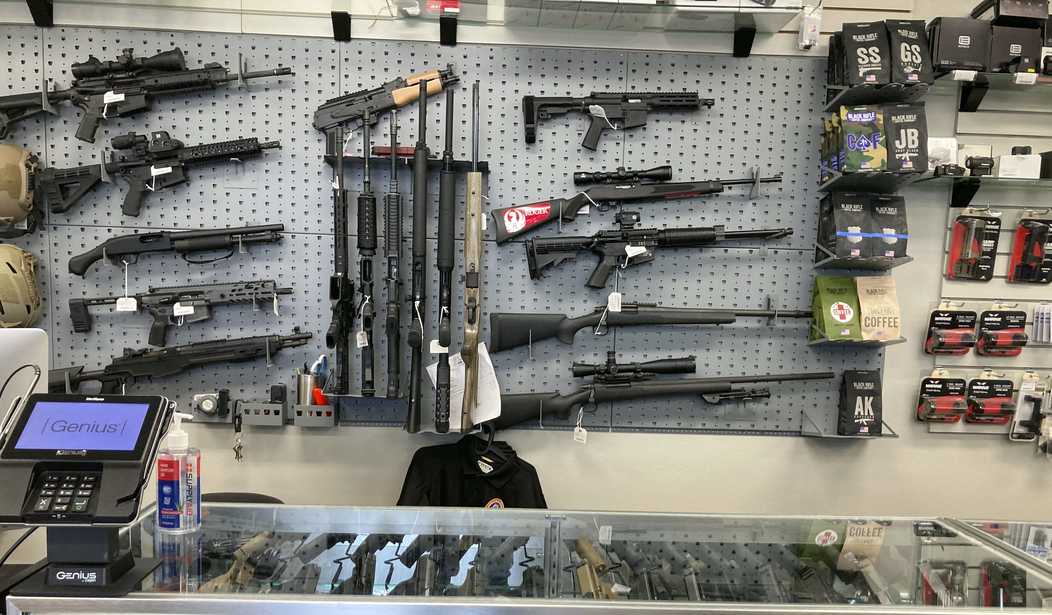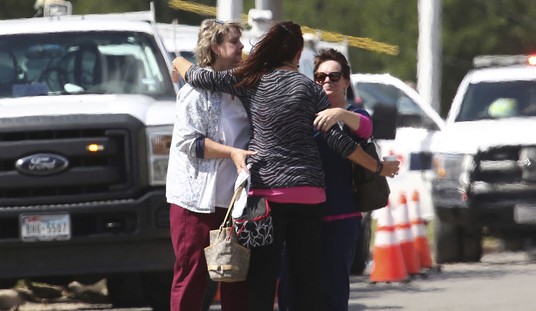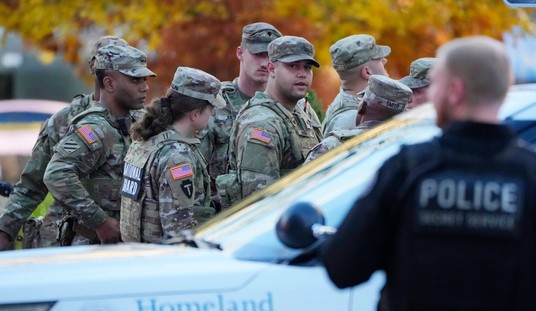According to the New York Times, the Centers for Disease Control and Prevention, the organization that has given us a year of misdirection, contradiction, lies, and superstitions in its response to the China virus, is now tentatively moving back into the business of treating gun ownership as a disease.
Dr. Bindi J. Naik-Mathuria, a pediatric trauma surgeon at Texas Children’s Hospital who grew tired of seeing toddlers die of gunshot wounds, has a $684,000 federal grant to track every gun-related death and injury in Houston. The goal: identify and address “hot spots” the way epidemiologists track and contain the coronavirus.
Dr. Garen J. Wintemute, an emergency room doctor and longtime firearm violence researcher in California, is supervising scientific research on whether community interventions in Detroit and Cleveland — including the greening of vacant spaces and the work of so-called violence interrupters like former gang members — can drive down gun-related deaths and injuries.
And Andrew R. Morral, a behavioral scientist at the RAND Corporation, a research group, is using sophisticated modeling tools to estimate rates of gun ownership in every state, with detailed demographic information. The purpose, he said, is to search for patterns in firearm homicides and suicides — a first, basic step in research that could lead to reducing them.
The recent mass shootings in Atlanta and Boulder, Colo., have once again left Democrats and Republicans in a stalemate over background checks for gun buyers and assault weapons bans. But public health experts say a new round of research could pave the way for gun policies that avoid partisan gridlock — and ultimately save thousands of lives.
The studies by Dr. Naik-Mathuria and the others are being paid for by the Centers for Disease Control and Prevention, which is once again funding research into gun violence after a nearly 25-year hiatus imposed by Congress. And while they might not reduce the number of massacres, mass shootings account for an extremely small percentage of the roughly 40,000 Americans who die each year from gun violence.
“There’s at least five different gun violence problems in the country and mass shooting is one of them,” said Mr. Morral, who has a Ph.D. in psychology. “There’s also suicide, there’s urban gun violence which mostly affects minority young men, there’s family shootings and there’s police shootings. And they all have different risk factors, they all have very different motives and they often involve different firearms.”
According to the story, this happened because the guy the NRA got fired, Dr. Mark Rosenberg of the CDC’s National Center for Injury Prevention and Control, became great buds with Jay Dickey:
In an extraordinary turn of events, Mr. Dickey, who died in 2017, befriended the man whose work he had cut off, Dr. Rosenberg. The pair grew so close that Dr. Rosenberg gave the eulogy at Mr. Dickey’s funeral.
In 2019, Dr. Rosenberg and Mr. Dickey’s former wife, Betty, a retired former prosecutor and chief justice of the Arkansas Supreme Court, helped persuade Congress to restore the funding; lawmakers appropriated $25 million, split between the C.D.C. and the National Institutes of Health, for firearm injury prevention research.
I don’t find stories like that to be heartwarming or uplifting. If you find someone who is pro-life palling around with a pro-abort, you are looking at a betrayal in the making. The same with any other social issue. Unfortunately, it is all too common in DC.
So how did all this come to be?
In 1993, a CDC-funded study titled Gun ownership as a risk factor for homicide in the home was published in the New England Journal of Medicine. To call the article hogwash is to give a bad name to the semi-plausible hogwash that the FBI and Intelligence Community generated on the Russia Hoax that had the media acting like a cat bemused by a laser-pointer. The study is a monument to that variety of social science research that starts at a politically-correct conclusion and works backward to develop “evidence.” It has been debunked in depth over the years but here is just a taste of what you’ll find if you read more in-depth about that study. If you owned a gun and were the victim of a home invasion where a member of your family was killed by the criminal(s), then that counted toward the total. The researchers couldn’t verify, in most cases, that the actual victim had a gun, but that didn’t slow them down:
For obvious reasons Kellermann, et al, could not interview homicide victims. So they had to rely on interviews of family members, roommates, neighbors or someone else deemed to be close to the victim. The researchers asked these proxies questions like “Did the victim keep a loaded gun in the house?” They also consulted police and autopsy reports.
For each homicide victim, Kellermann, et al, also randomly sought out someone else from the community who was demographically similar who had not died in a homicide to act as a control. In order to preserve consistency, the researchers did not interview the control subject directly; they selected a proxy for them as well. Again, in the interview, the control subject’s proxies were asked questions like, “Does the control subject keep a loaded gun in the house?”
The study showed that 45.4% of homicide victims kept a gun (any gun, loaded or unloaded) in the home. By comparison, only 35.8% of matching control subject proxies said that the control subjects kept guns in their homes. That’s far below more reliable national gun ownership statistics, including those touted by anti-gun groups.
The control percentage is underrepresented because proxies chosen for the control subjects aren’t necessarily privy to whether the control subject owns a gun and keeps it on the premises. For instance, none of my neighbors would possibly be able to testify as to whether I keep guns in my home. Nor do I know whether any of them keep guns. If you asked my father, mother, brother, or sisters, they wouldn’t be able to answer that question. The best they’d be able to offer is “maybe.”
As for the actual victims of homicide, there is little doubt as to whether they keep guns in the house because the police would have found them when they searched the premises. Or the coroner would have had to pry the gun from the victim’s cold dead fingers. [Sorry, I couldn’t resist.]
Kellermann, et al, concede that underreporting of gun ownership would skew up their numbers and blow up their conclusions. “We do not believe, however, that misreporting of gun ownership was a problem,” they write, because a separate pilot study confirmed their results against handgun registrations and other surveys.
But what about all of the guns not registered? Did they not think there might be more than a few Saturday Night Specials tucked in the waistbands of residents in the high-crime neighborhoods they selected for their study?
Kellermann’s methodology for counting firearm ownership among their control subjects was flawed. The number is low, which means that the math that computes an adjusted odds ratio of 2.7 is way off. Indeed, if you substitute the national average of 48% for the control group, it would show that having a gun in the home was a negative risk factor for homicide (i.e. lessened the chances of homicide in your home).
Additional analysis of Kellermann’s ICPSR dataset shows that just over 4½ percent of all homicides, in the three counties Kellermann chose to study, involved victims being killed with a gun kept in their own home (see derivation). This supports the conclusion that people murdered with a gun kept in their own home are a small minority of all homicides, precisely the opposite of what an uncritical reader of Kellermann’s study would likely conclude. The mis-citations of Kellermann’s study serve as examples: “In homes with guns, a member of the household is almost three times as likely to be the victim of a homicide compared to gun-free homes (source).” Or this page, which attempts a vigorous defense of Kellermann’s study, claims, “A gun in the home make [sic] homicide 2.7 times more likely,” and “the risk of getting killed was 2.7 times greater in homes with a gun than without them.” Perhaps these mis-citations are inadvertent, but Kellermann attempted to identify and measure the risk factors for being murdered in the victim’s home as opposed to an overall risk of gun owners or their families being murdered. The risks are different. Stated another way, murders in the home of victim residences are a subset of all murders. Kellermann’s study claims a murder is roughly 3 times more likely to occur in this subset (the victim’s home) to gunowners rather than non-gunowners. That is quite different from claiming a gun in the home triples one’s chances of becoming a homicide victim.
The study, published in a respected and peer-reviewed publication, had a huge impact on the discussion about gun regulation (by discussion, I mean the hectoring that gun owners get day in and day out from Karens who won’t leave us alone) before it was debunked. But, in the saying that is attributed to Winston Churchill, “A lie gets halfway around the world before the truth has a chance to get its pants on.” In fact, this particular lie is still ricocheting around anytime gun-grabbers get together.
It didn’t take a genius to see what was going to happen if studies funded by the CDC pointing out how dangerous guns were in the home were churned out, and so the National Rifle Association aimed what used to be a ferocious lobbying machine at stopping this nonsense. Arkansas Representative Jay Dickey attached a rider to the 1996 omnibus spending bill forbidding the CDC from funding gun research and, pointedly, removing the amount of money spent on such research previously from the budget of the responsible CDC organization. Though that rider has long since vanished, CDC got the message. Until now.
With Democrats in control of the House and Senate and the White House (thank you, all you highly principled “blessings of liberty” types living off donor cash at The Bulwark, The Dispatch, and National Review for your efforts), the Centers for Disease Control and Prevention is turning its attention to studying “gun violence” with a vengeance and without any brakes on what is going to inevitably result.
Why is the CDC, which has been shown to be utterly inept in the field of “disease control and prevention,” turning its attention from actual science to the nebulous bullsh** that is social science?
Beyond the obvious point that you can’t be proven obviously and publicly wrong based on social science research, what the Wuhan virus has done is open a whole new line of attack on the Second Amendment. By declaring the virus to be a public health emergency, the public health nazis, acting through a network of unelected bureaucrats, have shut down schools, closed businesses, forbidden church congregations to gather, forced us to wear totemic face masks to show our obedience, and are on the cusp of imposing a “vaccine passport” on us to allow us to go about our lives. With the legal impact of the First Amendment effectively neutered with court approval, they are gearing up for a frontal assault on gun rights.
If this trend goes forward, and it will, thanks to the people who hated Trump more than they respected the Constitution or loved their country, within the next four years, we will see possession of firearms declared a public health emergency, and gun ownership will be subjected to a wide array of diktats controlling your ability to own and use a firearm.














Join the conversation as a VIP Member